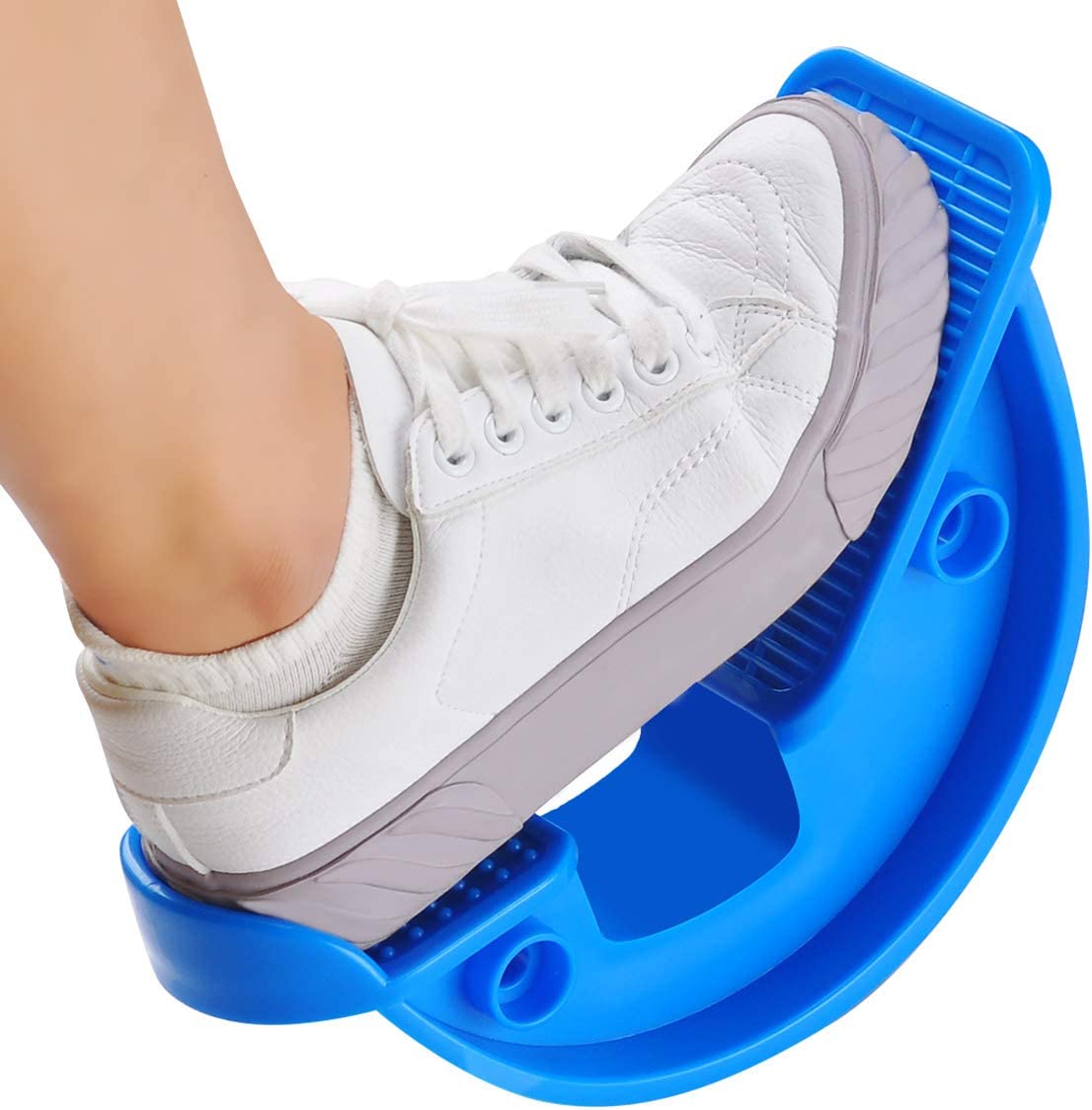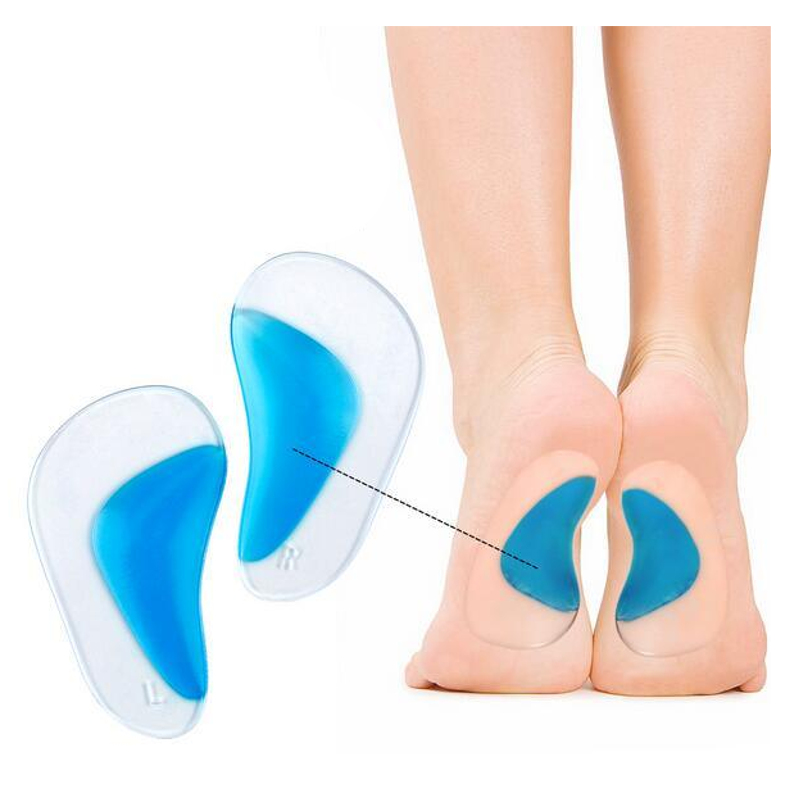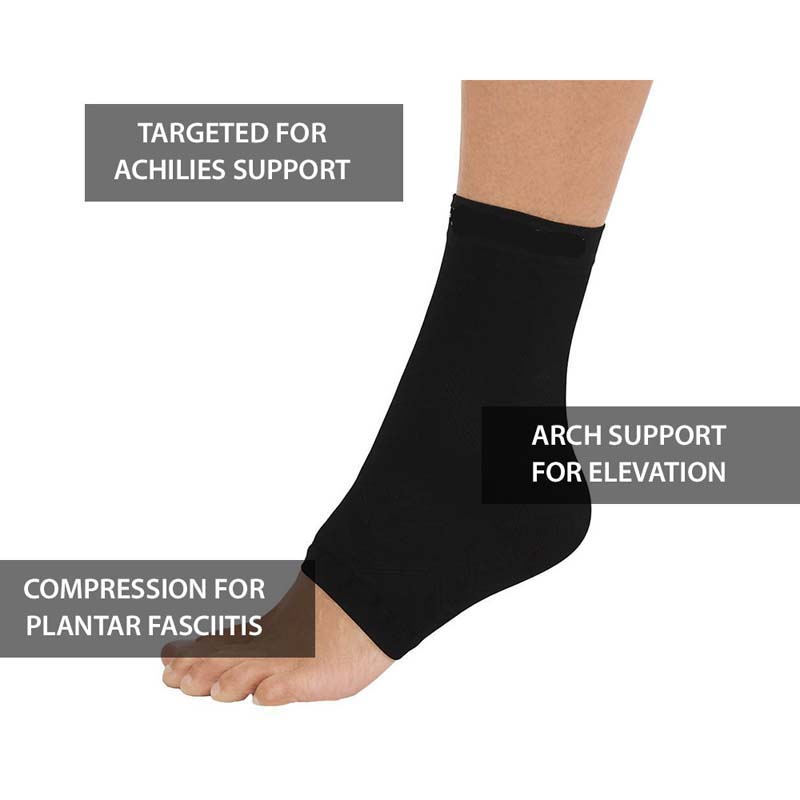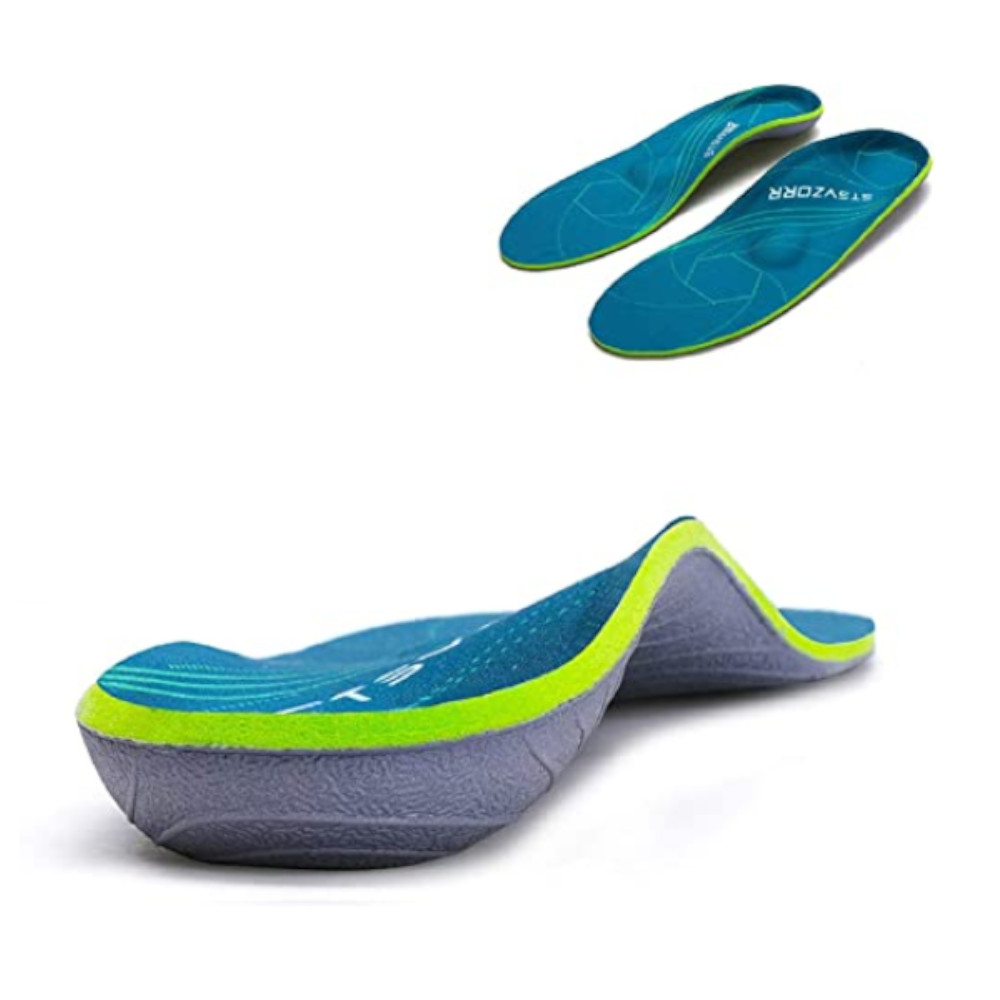The Role of Stretching in Plantar Fasciitis Recovery

Featured Products for Plantar Fasciitis Foot Pain Relief
Plantar fasciitis, characterized by inflammation of the plantar fascia—a thick band of tissue that runs along the bottom of the foot—can be a painful and challenging condition. Stretching exercises play a crucial role in the recovery process, providing relief and promoting healing. In this blog post, well explore the significance of stretching in managing and recovering from plantar fasciitis.
Understanding Plantar Fasciitis:
Before delving into the role of stretching, its essential to understand the dynamics of plantar fasciitis. This condition often results from overuse, improper footwear, or issues with foot mechanics. The plantar fascia, when strained or inflamed, can lead to intense pain in the heel, particularly during the first steps in the morning or after extended periods of rest.
How Stretching Helps:
-
Increases Flexibility:
- Stretching exercises for the calf muscles, Achilles tendon, and the plantar fascia itself help enhance flexibility. Increased flexibility in these areas reduces tension and strain on the plantar fascia during movement.
-
Promotes Blood Flow:
- Stretching promotes blood flow to the affected area. Improved circulation aids in the delivery of oxygen and nutrients, supporting the healing process and reducing inflammation.
-
Prevents Microtears:
- Over time, the plantar fascia can develop microtears due to repetitive stress. Proper stretching helps prevent the formation of these microtears by promoting elasticity and strength in the tissue.
-
Alleviates Morning Stiffness:
- Stretching exercises, especially those performed before getting out of bed, can alleviate the morning stiffness commonly associated with plantar fasciitis. Gently stretching the plantar fascia helps prepare it for weight-bearing activities.
Effective Stretching Exercises:
-
Calf Stretches:
- Stand facing a wall with one foot forward and the other back. Keep both heels on the ground and bend the front knee while keeping the back leg straight. Hold for 20-30 seconds and switch legs.
-
Achilles Tendon Stretch:
- Stand facing a wall with one foot forward and the other back. Bend both knees slightly and lean forward, keeping both heels on the ground. Hold for 20-30 seconds.
-
Towel Stretch:
- Sit on the floor with your legs stretched out. Loop a towel around the ball of one foot and gently pull the towel towards you, keeping your knee straight. Hold for 15-20 seconds and switch feet.
-
Seated Plantar Fascia Stretch:
- Sit with one ankle crossed over the opposite knee. Gently pull your toes back towards your shin until you feel a stretch along the bottom of your foot. Hold for 15-20 seconds and switch sides.
-
Rolling Massage:
- Roll a frozen water bottle or a tennis ball under your foot, applying gentle pressure. This self-massage helps relieve tension and inflammation.
Dos and Donts of Stretching for Plantar Fasciitis:
Dos:
-
Be Consistent: Perform stretching exercises regularly, especially before weight-bearing activities.
-
Listen to Your Body: If a stretch causes pain beyond a gentle pull, modify the intensity to avoid exacerbating the condition.
-
Combine Static and Dynamic Stretches: Include both static stretches (held positions) and dynamic stretches (controlled movements) in your routine.
Donts:
-
Forceful Stretching: Avoid aggressive or forceful stretching, as it can lead to injury. Gentle, controlled stretches are more effective.
-
Neglect Other Treatment Options: While stretching is beneficial, its essential to complement it with other treatments such as proper footwear, orthotic inserts, and rest.
-
Overlook Professional Guidance: Consult with a healthcare professional or a physical therapist to ensure youre performing the right stretches for your specific condition.
Conclusion:
Stretching is a cornerstone in the management and recovery of plantar fasciitis. By incorporating these exercises into your daily routine and being mindful of proper technique, you can contribute to the alleviation of pain, enhance flexibility, and support the healing process. Remember, individual responses to stretching may vary, so its crucial to monitor your progress.
Featured Products for Plantar Fasciitis Foot Pain Relief
Latest Blogs
- Taking a Stand Against Heel Pain: Practical Solutions
- Happy Heels, Happy Life: Banishing Foot Pain for Good
- The Road to Relief: Strategies for Combating Heel Pain
- Heel to Toe Wellness: Tackling Foot Pain Head-On
- Foot Pain Decoded: Understanding the Signals Your Feet Send
- Soothing Steps: Natural Remedies for Heel and Foot Pain
- Putting Your Best Foot Forward: Managing Heel Discomfort
- The ABCs of Happy Feet: Beating Heel and Foot Pain
- From Heel to Toe: Navigating Common Foot Pain Issues
- Taking a Step Back: Causes and Remedies for Heel Pain
- Footloose and Pain-Free: Tips for Happy Heels and Feet
- Soleful Solutions: A Guide to Alleviating Heel and Foot Discomfort
- Stepping Into Comfort: Understanding Heel and Foot Pain
- From Pain to Progress: Inspiring Plantar Fasciitis Journeys
- Living a Full Life with Plantar Fasciitis: Success Stories
- Plantar Fasciitis and Exercise: Finding the Right Balance
- The Impact of Stress on Plantar Fasciitis Symptoms
- Plantar Fasciitis: When to Seek Professional Help
- Inflammatory Foods and Plantar Fasciitis: What to Avoid
- Ergonomics and Plantar Fasciitis: A Comprehensive Guide
- The Importance of Rest in Plantar Fasciitis Recovery
- Traveling with Plantar Fasciitis: Tips for Happy Feet
- Plantar Fasciitis and Your Sleep: Improving Rest Quality
- The Psychological Aspect of Living with Plantar Fasciitis
- Plantar Fasciitis and High-Impact Activities: Navigating Risks
- How to Stay Active with Plantar Fasciitis: Practical Tips
- Plantar Fasciitis and Aging: Strategies for Seniors
- Cryotherapy for Plantar Fasciitis: Icy Relief for Your Feet
- Aquatic Exercise for Plantar Fasciitis: Dive into Healing
- Mindfulness and Meditation for Plantar Fasciitis Relief
- Heel Pain 101: A Guide to Plantar Fasciitis
- Finding Relief - Plantar Fasciitis Home Remedies
- The Emotional Toll of Chronic Plantar Fasciitis
- Post-Workout Foot Care for Plantar Fasciitis Sufferers
- DIY Foot Massage Techniques for Plantar Fasciitis
- From Diagnosis to Recoveryc- Navigating Plantar Fasciitis
- Plantar Fasciitis in Children Signs and Solutions
- Plantar Fasciitis and Weight: Impact on Foot Health
- How Nutrition Affects Plantar Fasciitis Recovery
- Yoga for Plantar Fasciitis: Poses for Pain Relief
- Breaking Down Plantar Fasciitis Myths and Misconceptions
- Plantar Fasciitis Stretches - Daily Routine for Relief
- The Link Between Plantar Fasciitis and Flat Feet
- Plantar Fasciitis in Pregnancy - What to Expect
- Desk Job Dilemma - Coping with Plantar Fasciitis at Work
- Plantar Fasciitis in Athletes Strategies for Recovery
- Massage and Plantar Fasciitis A Soothing Combination
- Plantar Fasciitis at Night: Tips for Better Sleep
- Plantar Fasciitis vs Heel Spurs - Understanding the Difference
- The Role of Stretching in Plantar Fasciitis Recovery
- Running with Plantar Fasciitis: Dos and Donts
- Preventing Plantar Fasciitis: Tips for Foot Health
- Natural Remedies for Plantar Fasciitis You Havent Tried
- Heel Pain Demystified: Plantar Fasciitis Explained
- Best Shoes for Plantar Fasciitis: A Comprehensive Guide
- Managing Plantar Fasciitis Pain: Tips and Tricks
- The Complete Guide to Plantar Fasciitis Treatment Options
- 10 Effective Exercises for Plantar Fasciitis Relief at Home
- Understanding Plantar Fasciitis: Causes and Symptoms
- Why do I get Pain in My Feet at Night
- Is pain in your feet a sign of diabetes
- What causes pain in my feet
- Plantar Fasciitis - Why so Painful
- What is that pain in my heel
- Should I Walk with Foot Pain
- How to Treat Ankle Pain
- 10 Best Exercises of Plantar Fasciitis
- Do Compression Socks Help Foot Pain
- Do Insoles Work for Foot Pain
- Best Stretches for Plantar Fasciitis
- 5 Causes of Plantar Fasciitis
- Do Back Posture Braces Actually Work
- Foot pain from walking
- Best Insoles for Plantar Fasciitis
- Pain in heel of foot after Running
- Treatment for Pain in arch of foot
- Pain on top of foot
- Mortons neuroma treatment
- How to remove an Ingrown Toenail
- Foot Heel Spur Pain
- Sore Foot in the Morning
- Suffer Heel Pain in the Morning ?
- Start a running routine
- Running through Fatigue
- Best Achilles Tendonitis and Ankle Excercises
- Causes of Achilles Tendonitis and Ankle Pain
- Plantar Fasciitis Cure and Treatment
- Best Plantar Fasciitis Products
- Causes of Plantar Fasciitis and Heel Spur Pain
- Best Plantar Fasciitis Excercises



















